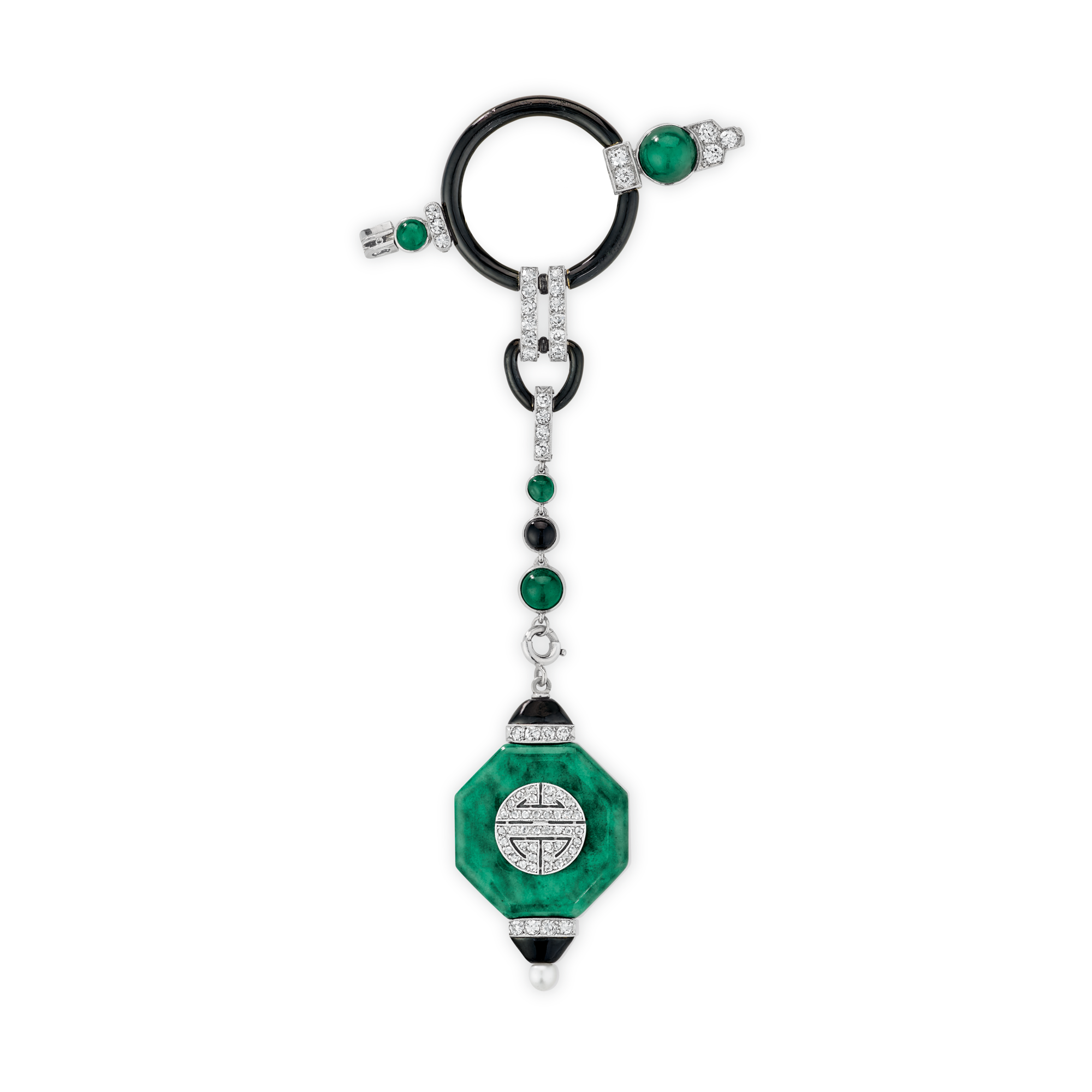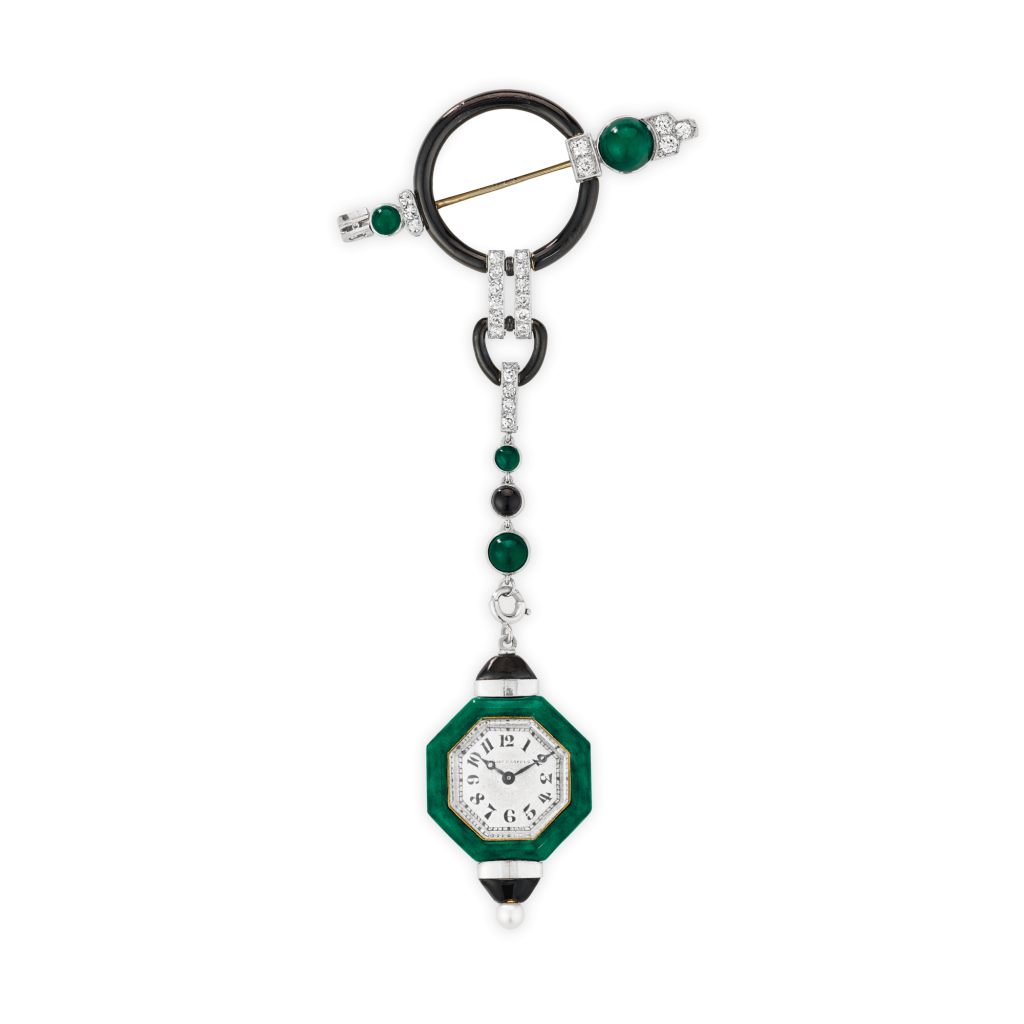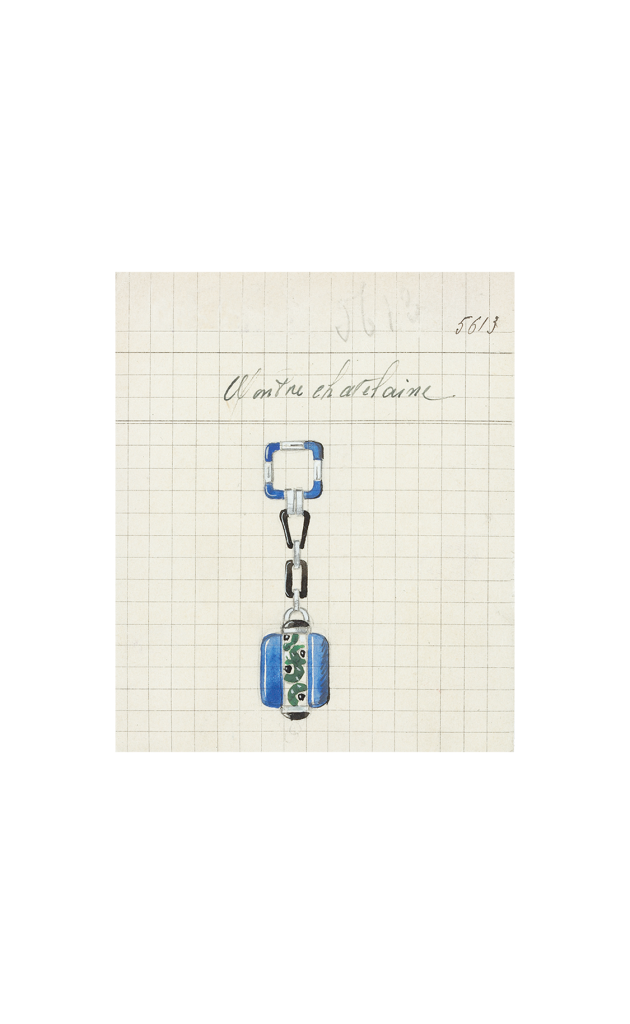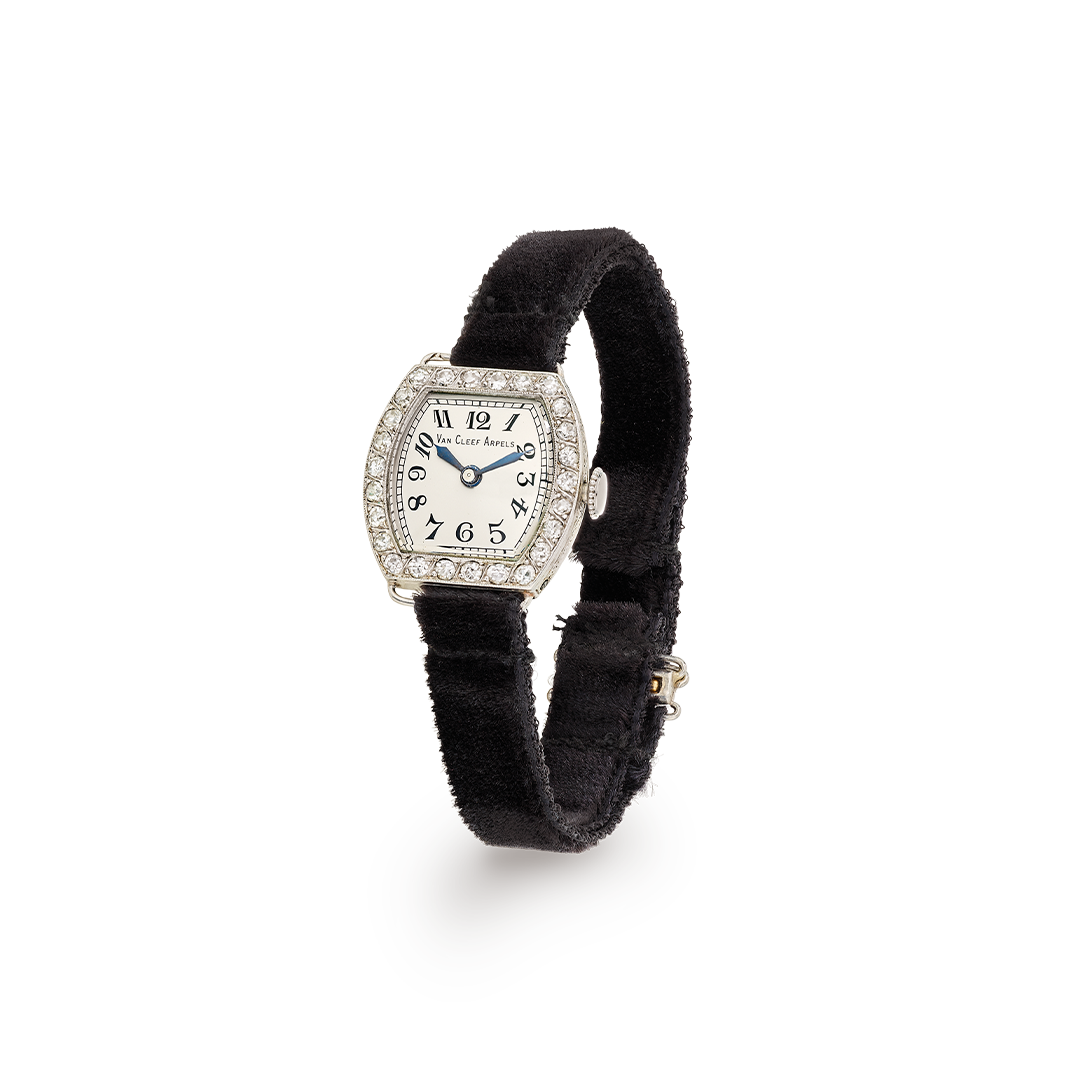
Chatelaine watch


Creation details
- Creation year 1924
- Usage Watch
- Dimensions 115 × 55 mm
The chatelaine watch is illustrative of the developments that took place in the watchmaking arts in the early decades of the twentieth century. The model here is composed of an octagonal green enameled case, the back of which is framed top and bottom, with a row of diamonds and an onyx cabochon, while the center bears a Chinese character in platinum set with diamonds.
A pearl marks the winding system. The whole thing is linked by a snap hook to three alternate jade and onyx closed-set cabochons. These are completed by links set with diamonds flanking one onyx link that, together with the cabochons, form the chatelaine chain. This is in turn suspended from an onyx ring with a pin that allows the timepiece to be attached to a garment. Both ends of the pin are decorated with a circular jade cabochon flanked by diamonds.
The evolution of the chatelaine watch in the 20th century
Chatelaines are a type of jewelry inherited from the adornment typology of the seventeenth century, referring to charms suspended from a chain at waist level, displaying seals, keys or watches. The chatelaine evolved throughout the nineteenth century and by the start of the twentieth century it had assumed a new form, that of a brooch holding a pendant or seal adorned with a watch on its reverse side.
PRODUCT CARDS OF CHATELAINE WATCHES

The influence of the Far East
All the stylistic and iconographic variations of the decade were seen in chatelaine watches, starting with influences from non-Western countries. The year 1924 proved to be a particularly prolific period for this type of timepiece, with multiple forms and materials in use. The example seen here is proof of this, with its utilization of both real jade and enamel imitating it, and a Chinese character decorating the back of the watch.
A transition to bracelet watches
At the end of the 1920s, Van Cleef & Arpels abandoned vividly colored enamels and gemstones in favor of chatelaine watches that played on the contrast of metal alloys. From the 1930s, chatelaines themselves were gradually replaced, for practical reasons, by bracelet watches which took over in the following decades in what was to become an enduring trend. Van Cleef & Arpels accompanied this transition together with the different stylistic and technical developments of the period.
To go deeper













